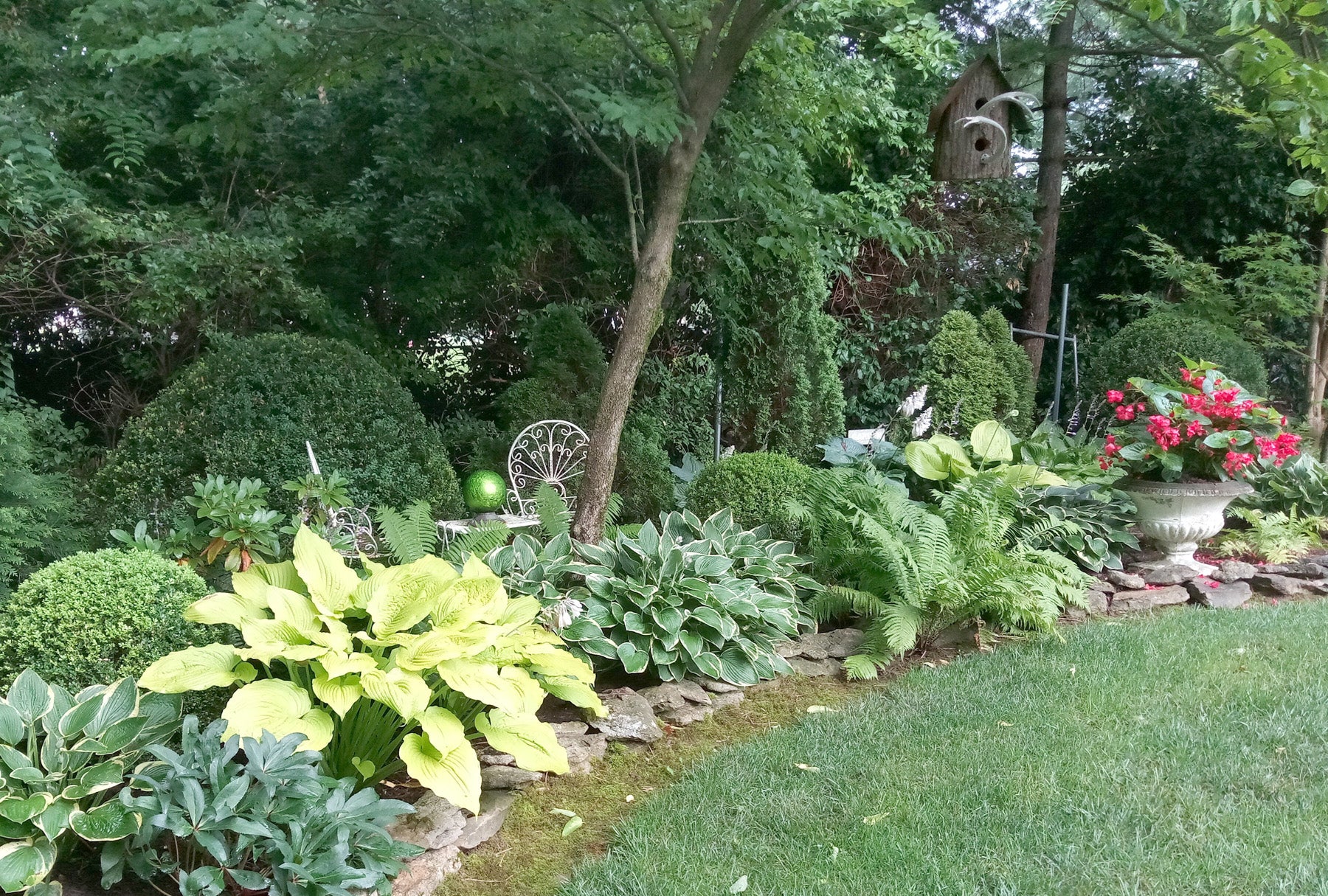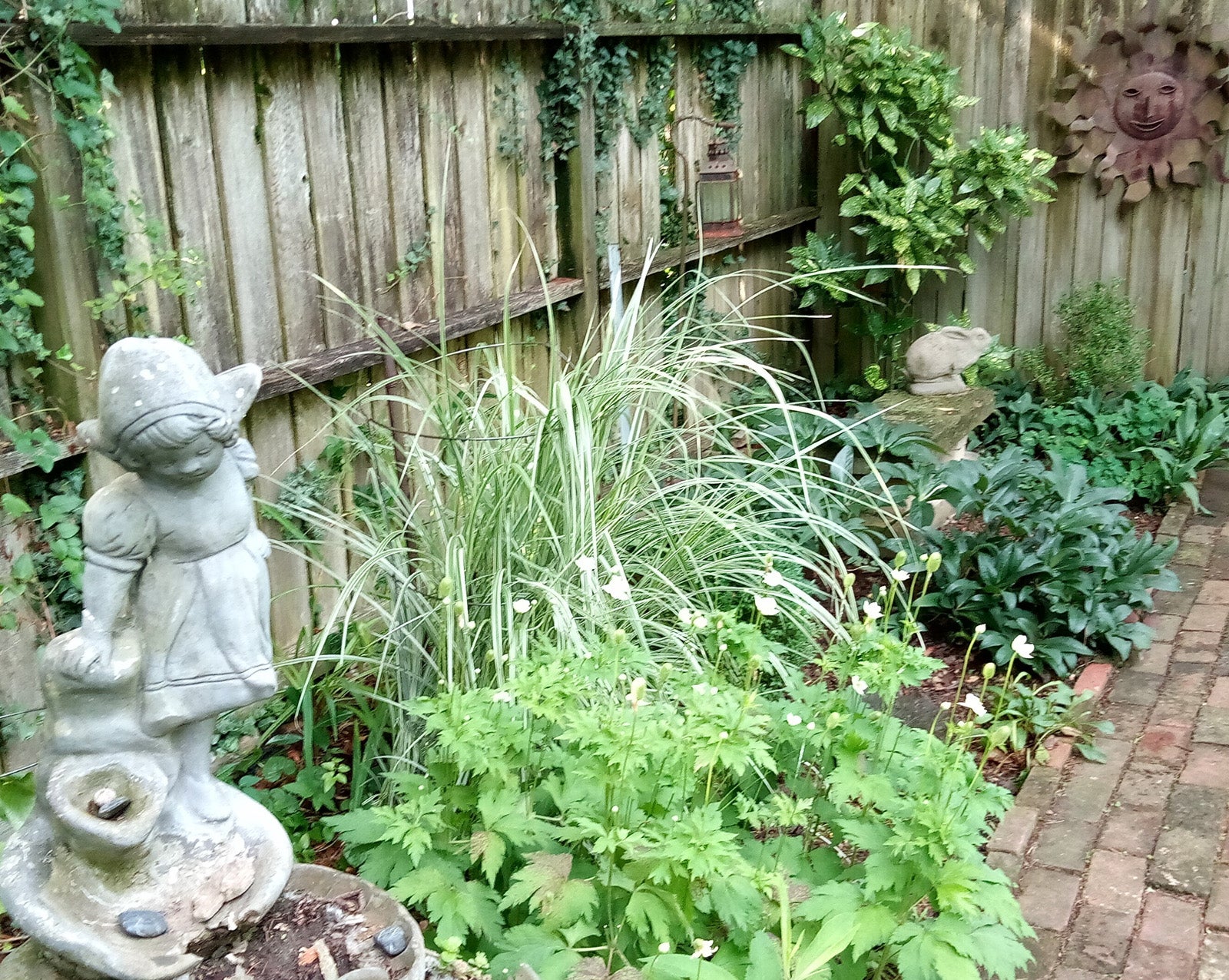Appreciation for foliage gardens really grows
Published 2:51 pm Sunday, July 12, 2020

- A foliage garden can be far from dull and plain green. Martha Caywood, president of the Garden Club of Danville, has been tending the same garden for 43 years. By using leaf size, color, texture, and shape she has created a garden so interesting that no one even misses the flowers, and it is much less work. Hostas, ferns, and hellebores fill the summer border, with annual begonias in urns for a splash of bright color. Boxwoods and arborvitae provide winter structure.
By SUSAN JONAS
Garden Club of Danville
If we were to ask every gardener in Danville to make a list of favorite plants, each list would be wildly different. Some people love annuals, some perennials, from big and showy to understated and discrete.
Others don’t need flowers at all but rely on foliage for color and texture. A look at gardens around town will tell you that variety appeals to many, while others prefer repetition, using only a few kinds of plants.
It would be interesting to know if those favorites have changed over the years. Mine certainly have.

After a lifetime of gardening, Kay Arnold has decided that green is a splendid color for gardens, and foliage plants are easier to care for than flowers. She relies nowadays on foliage variety for interest. Ornamental grass adds height and movement to the border behind a Japanese anemone with small white flowers and the dark shiny leaves of a Lenten rose. Yellow-speckled leaves of Acuba japonica brighten the rear fence corner at the end of this brick path.
One thing that often happens as gardeners mature (a polite way of saying “get old”) is an increasing appreciation for foliage plants. Kay Arnold, a member of the Garden Club of Danville, has been gardening most of her life. When asked how her planting tastes have changed over the years, Kay replied, “Green is a splendid color! Annuals with their many colors need added upkeep. I use very few of them.”
Like many of us whose flexibility and strength aren’t what they used to be, Kay has learned that maintaining blooming plants can become more chore than pleasure. Stooping, kneeling, and reaching to tie up flower stalks and deadhead flowers all summer long isn’t as enjoyable as it once was.
It’s even less fun when the heat and humidity have been as high as we’ve suffered lately. Perennial flowers must be dug up and divided every few years to keep them blooming heavily; that’s hard work. And, of course, annual flowers must be grown from seed or purchased and planted every spring.
Martha Caywood, current president of the Garden Club, agrees that foliage gardens are easier to care for. “This is my first garden,” she said. “It has taken 43 years and now I want to reduce maintenance.”
Because of the many shade trees around her backyard, she naturally gravitated in the beginning to foliage plants that thrive in the shade, like boxwoods, hostas, and ferns. They are still the backbone of this large garden.
She adds urns of annual begonias for color, plus blooming shrubs and a few flowering plants. Looking back, Martha would have used more perennials and more color, but she’s not making changes at this point. If you visited her garden on the club’s garden tour last year you know how successful she has been.
A garden without flowers doesn’t have to be all green. A quick glance at my own shade garden offers leaves of all shapes and sizes in white, gold, pink, lime, red, gray, and burgundy. They may be solid colors or brightly patterned.
Leaves tinged with yellow, blue, or bronze can act as a focal point next to a green background. Over the years, plant breeders have developed new colors and combinations of old favorites like coleus, heucheras, and caladiums that used to be offered in just two or three varieties.
The category of gray and silver plants seems to get larger every year as more varieties appear. Silver is probably not one of the first colors you think of when choosing plants for your garden, but they can light up a bed of darker plants.
Lambs ears, artemisia, and dusty miller come to mind right away. Many of them have fuzzy leaves which contrast nicely with shiny green leaves nearby.
Many drought-tolerant plants have silver foliage as a survival mechanism. Silver or gray succulents and aloes in pots look striking in sunny areas and they don’t need regular watering.
Rather than present a list of good foliage plants for gardens (there would be dozens, if not hundreds of them), I suggest you spend some time exploring a well-stocked garden center.
Surprising new varieties are introduced every year. The best centers set up displays illustrating pleasing combinations that will inspire you.
July and August are not good times to put in new plants, but most perennials can be planted in autumn, or you can begin planning for next spring.
A foliage garden can be far from dull and plain green. As Kay, Martha, and many others have learned, foliage plants, including trees and shrubs, offer leaves of many colors, both solid and variegated. Textures range from frothy ferns and fuzzy lamb’s ears to the thick shiny leaves of magnolia, in a myriad of shapes.
By using leaf size, color, texture, and shape you can create a garden that is so interesting you won’t even miss the flowers, and it is much less work. Foliage carries a garden through the seasons, long after flowers have faded to a memory.






